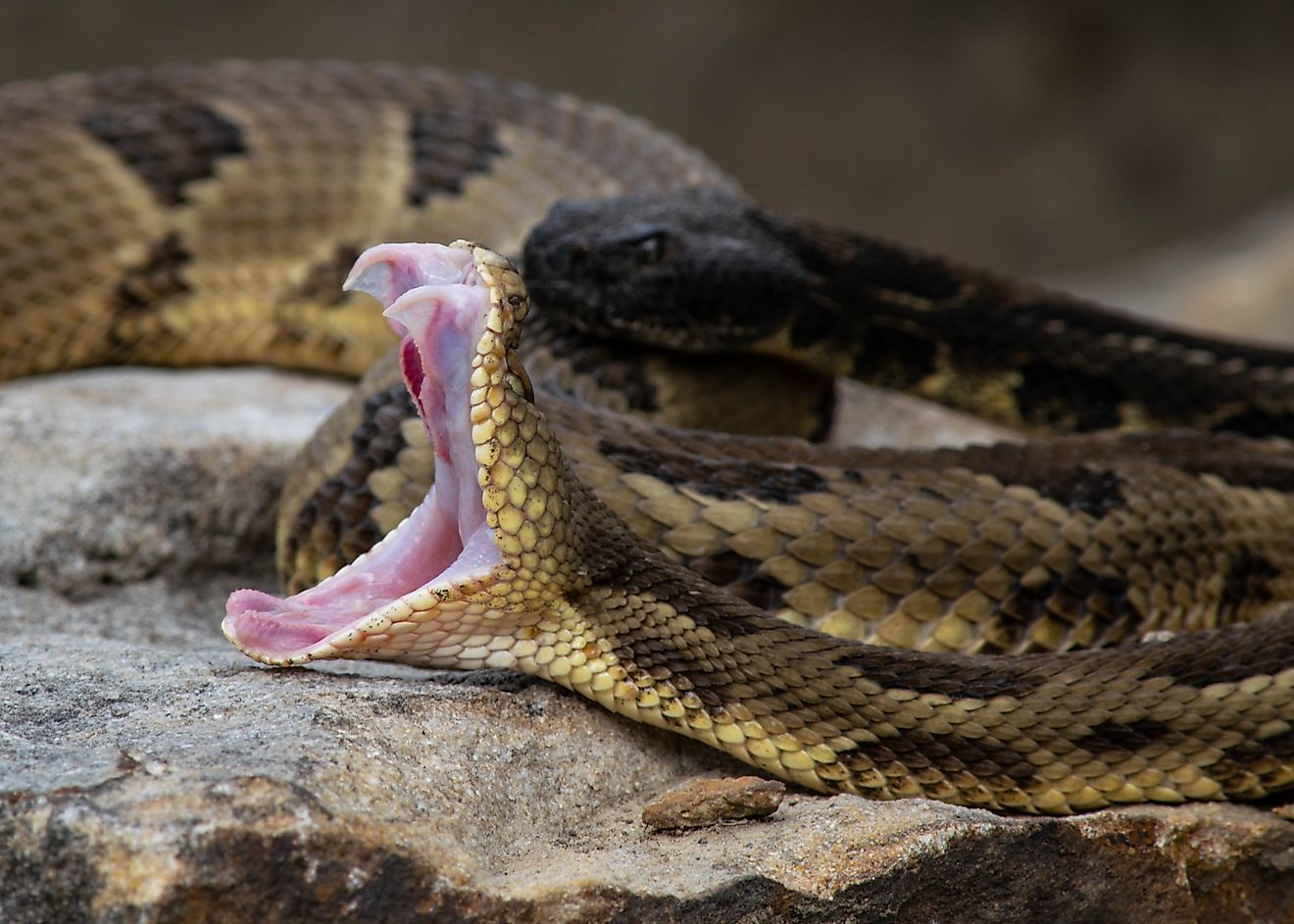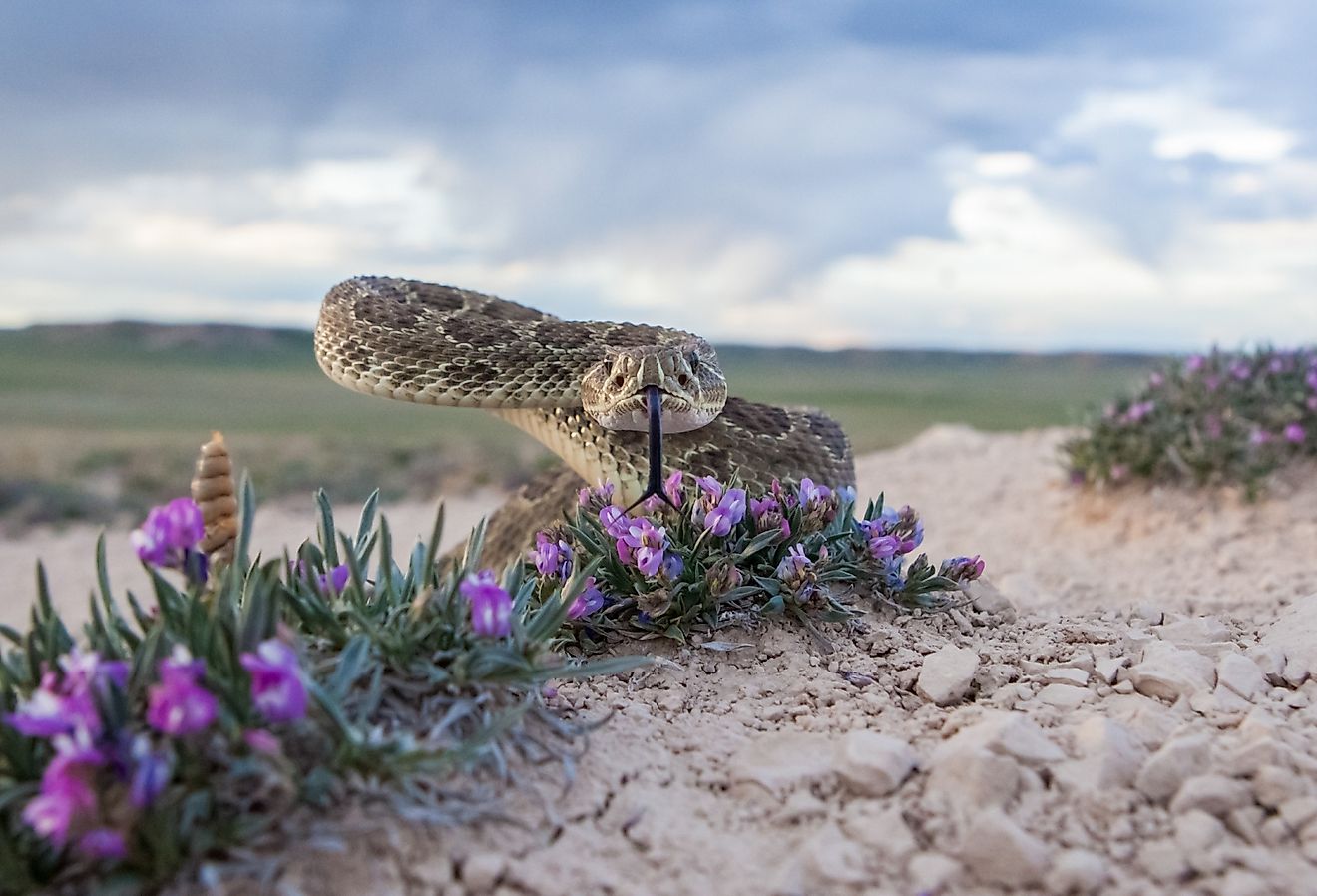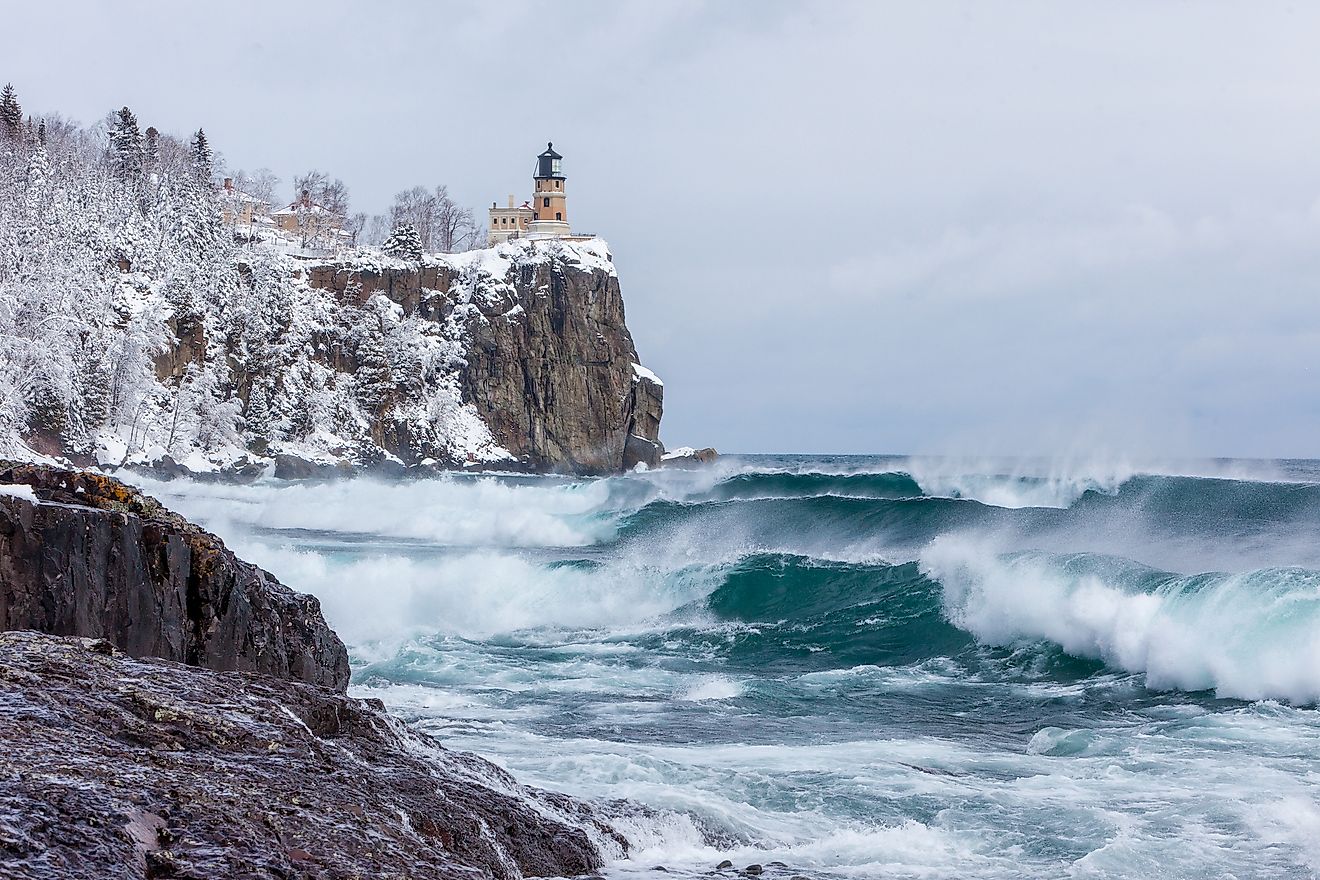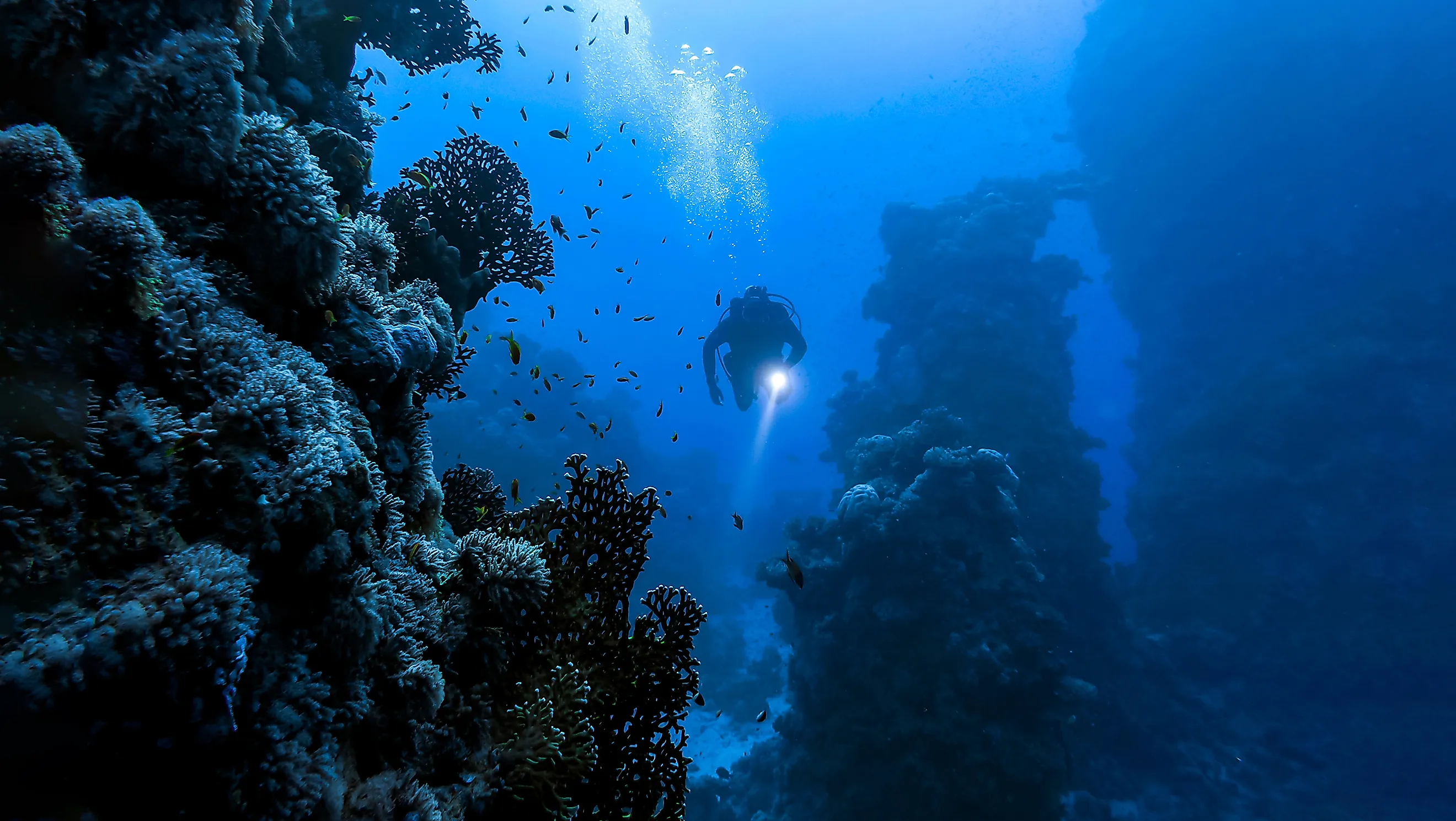
11 Strangest Things Found Deep in the Pacific Ocean
The Pacific Ocean, with a surface area of about 64 million square miles (165 million sq. km.), is the largest and deepest of the Earth’s oceans. Exploring the depths of this enormous expanse reveals a realm teeming with secrets, from ancient civilizations to modern ecological wonders, shaping our understanding of deep waters. Thankfully, technological advancements have allowed humans to explore further into the Pacific, leading to many strange discoveries. These 11 strange discoveries in the Pacific include mysterious orbs, underwater crop circles, historical artifacts, and ecological anomalies that are sure to shock.
Golden Orb
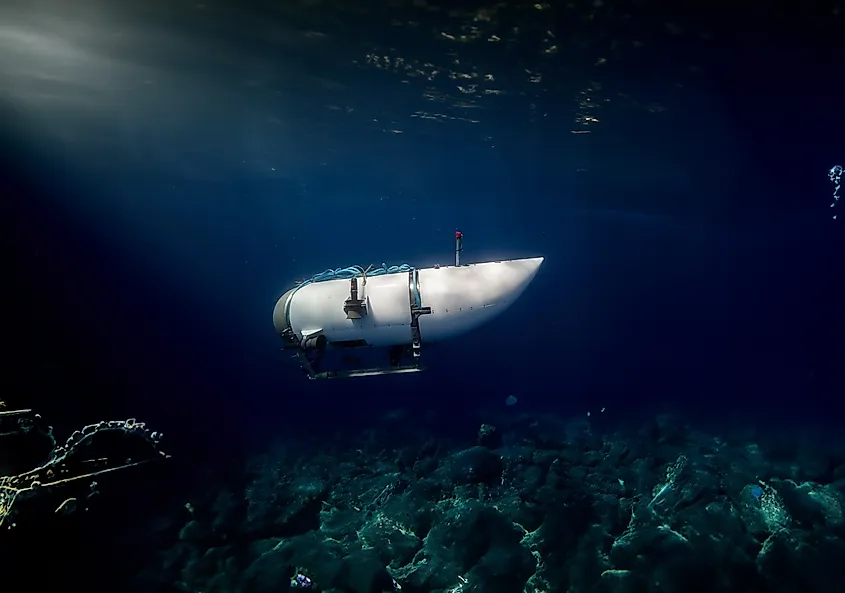
During the recent Seascape Alaska 5 expedition by the National Oceanic and Atmospheric Administration (NOAA) in the fall of 2023, scientists discovered a gold-colored orb about four inches in diameter on the ocean floor. The smooth, soft object was stuck to a rock about two miles (three km) below the surface of the Pacific Ocean and discovered by a team of researchers using remotely operated vehicles (ROVs) to map deepwater habitats near Alaska. The mysterious orb was suctioned from the ocean floor and brought to the lab for further analysis. Biological in origin, some scientists think it’s an egg, coral, or a sponge, but the one thing that caught everyone’s attention—a tiny hole in the orb, as if something had gone in or come out.
Ship Graveyard
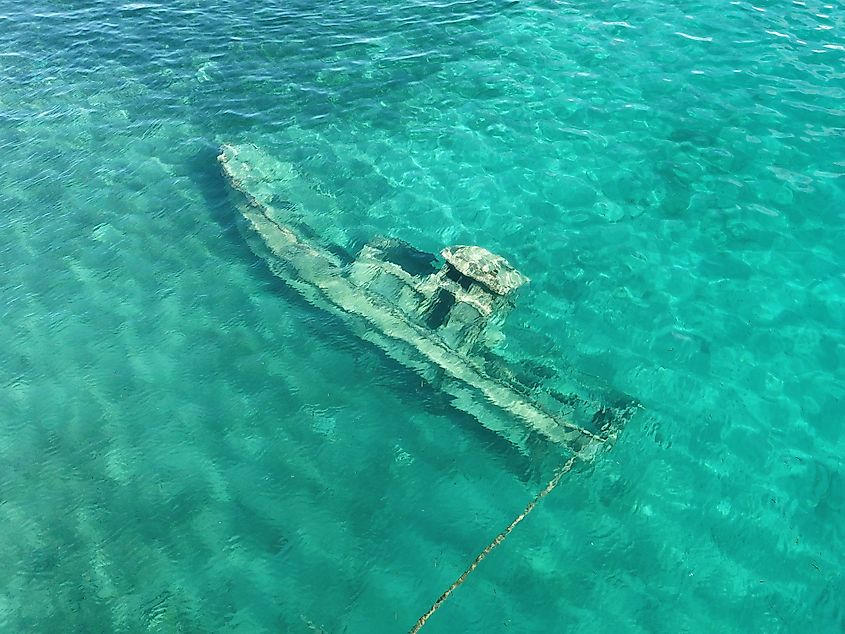
Chuuk Lagoon (previously known as Truk Atoll) is a body of water in the central Pacific Ocean, about 1,100 miles (1,770 km) northeast of New Guinea. The lagoon was Japan’s main naval base during World War II, but in 1944, the U.S. forces launched a fatal attack on what was called the Japanese equivalent of Pearl Harbor. “Operation Hailstone” sank more than 60 Japanese warships and 250 planes. Today, beneath the surface of the lagoon, thousands of World War II artifacts are preserved, including gas masks, human skulls, sake bottles, bullets, and even family photographs. In 1969, renowned French oceanographer Jacques Cousteau explored the lagoon in his documentary, “Ghost Fleet of Truk Lagoon.” Thus, the lagoon is now a popular destination for scuba divers but is a controversial dive site as it is classified as a Japanese war grave.
Amelia Earhart’s Plane (Lockheed 10-E Electra)
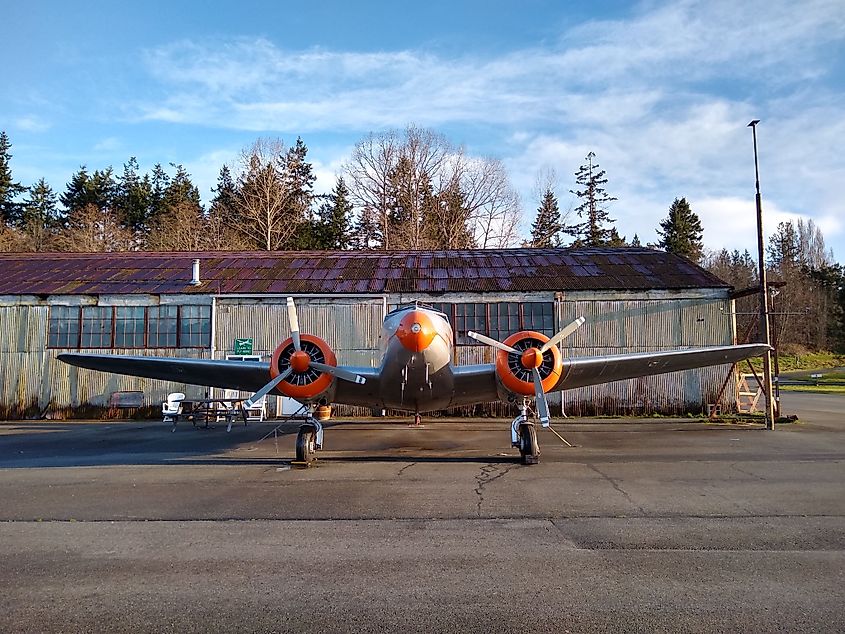
Amelia Earhart has long been the stuff of legends. In June 1928, she became the first woman to fly solo across the Atlantic Ocean, then the first woman to fly solo across North America and back. On May 21, 1937, Earhart embarked on her most ambitious trip to circumnavigate the globe. She took off from Oakland, California, and after long days and weeks of flying, she landed in Lae, New Guinea. From there, she took off for Howland Island but never arrived. Since then, the mystery of what happened to her has captivated millions across the globe, with minimal new findings. However, in January 2024, ocean exploration company Deep Sea Vision said it captured compelling sonar images of what could be Earhart's aircraft (Lockheed 10-E Electra) at the bottom of the Pacific Ocean. While it is not yet confirmed, this would be a huge step in finding out what actually happened to Amelia Earhart.
MV Derbyshire
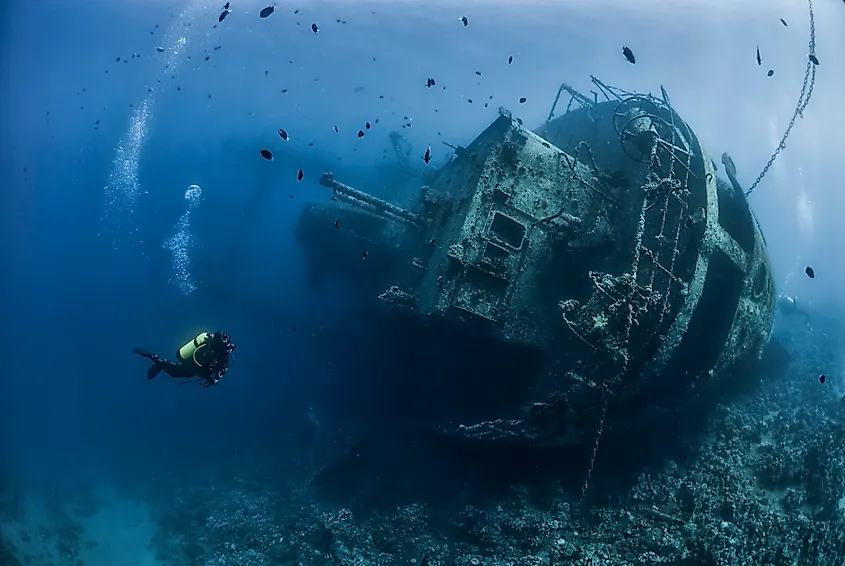
The Titanic often takes the limelight when it comes to shipwrecks, but the tale of MV Derbyshire is not far behind. The massive 92,000-ton merchant ship sank in the Pacific Ocean off Japan without ever issuing a Mayday distress call. Even though the four-year-old ship was designed to sail beneath Cape Horn and the Cape of Good Hope—some of the roughest seas in the world—the ship capsized during Typhoon Orchid 230 miles from Okinawa, killing all 42 crew members onboard. Searchers eventually found the ship at a depth of 2.5 miles (four km) in June 1994 and spent 40 days examining the debris field. Even today, the MV Derbyshire is the largest British ship ever lost at sea.
The Dragon’s Triangle
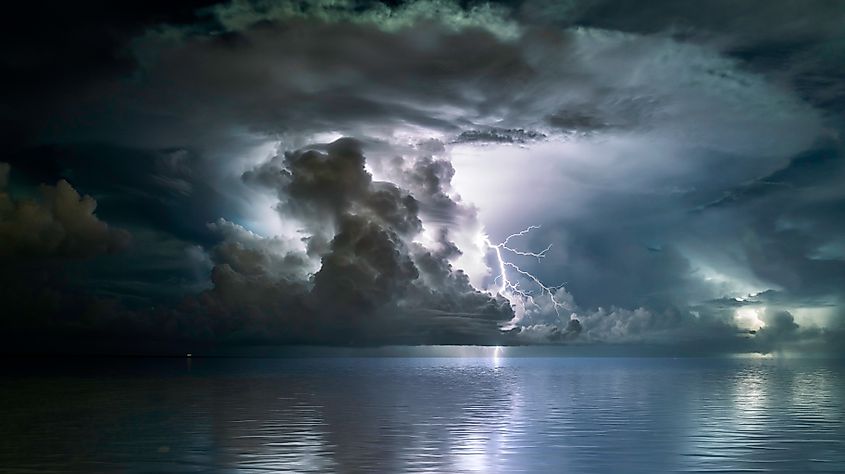
The Dragon’s Triangle is an area of the Pacific Ocean, south of Japan. Also known as the Devil’s Sea, it is one of twelve “vile vortices” on Earth—areas believed to have high electromagnetic disturbances. The Dragon’s Triangle, in particular, has been a hotspot of shipwrecks for hundreds of years, with early traces dating back to 1280 AD when Genghis Khan lost his vessels in the region. In the 1940s and 1950s, several fishing vessels and military ships disappeared in the area, and the Kaio Maru No.5 was sent to investigate the missing vessels. This ship also went missing with its crew of 31 members, and while it was eventually recovered, the Japanese government declared this area dangerous. The most famous vile vortex is The Bermuda Triangle, in the Atlantic Ocean, and one can only speculate what strange things are hidden under that vortex and the Dragon’s Triangle.
Underwater Crop Circles
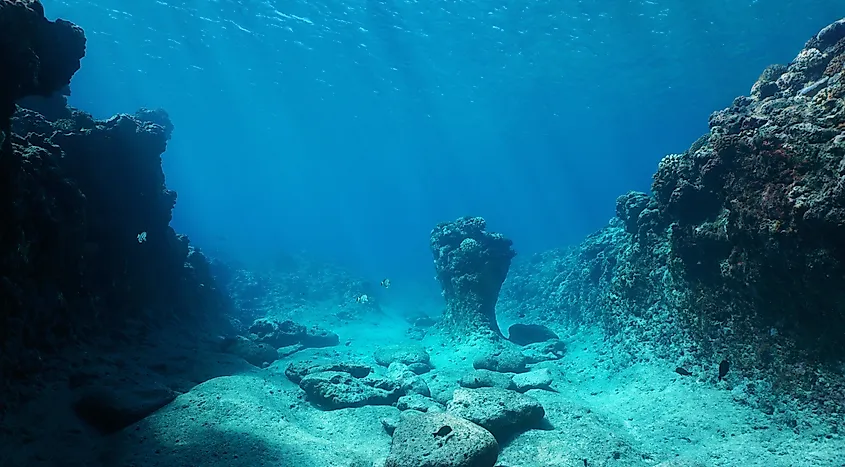
In 1995, divers discovered strange geometric circles on the seafloor near Amami Oshima Island off the coast of Japan, and they were dubbed “underwater crop circles.” It wasn’t until a decade later that researchers from the Coastal Branch of Natural History Museum and Institute in Chiba, Japan, discovered that these 7-feet-in-diameter ornate circles are made by male pufferfish flapping their fins along the seafloor to create the circular patterns in some kind of underwater mating ritual. Female pufferfish lay eggs in the fine sediment in the center of the circles, and then male pufferfish fertilize the eggs.
Ancient City
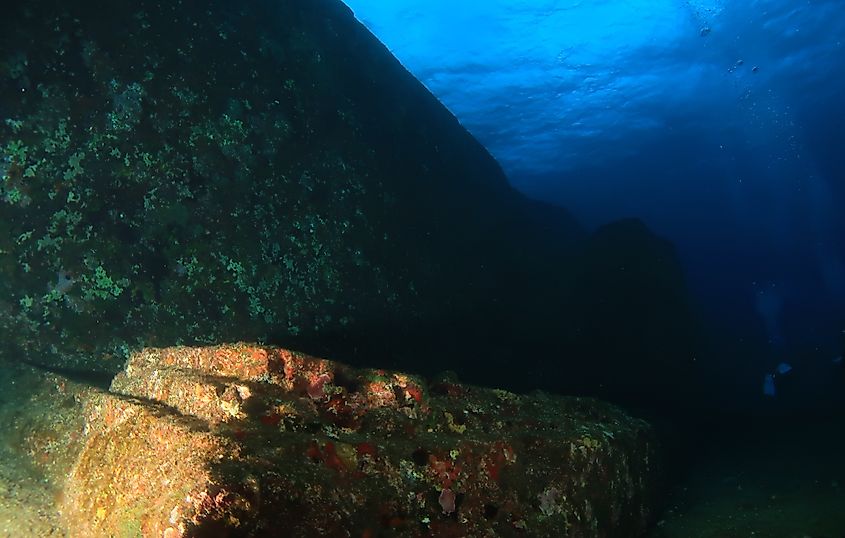
Similar to the previous three strangest Pacific Ocean discoveries, The Yonaguni Monument is another finding near Japan. This underwater rock structure was discovered in the mid-1980s near Yonaguni Island, one of the westernmost inhabited island of Japan. The island is famous for its mysterious underwater rock formations, known as the Yonaguni Monument, which some believe to be the remnants of an ancient, submerged city. The rectangular monument is more than 165 feet (50 meters) long and 65 feet (20 meters) wide and consists of massive, geometric sandstone structures resembling steps, terraces, and columns. While many believe it is proof of a 5,000-year-old submerged city, some researchers also claim that the monument is a natural formation caused by currents in the surrounding waters.
The Blob
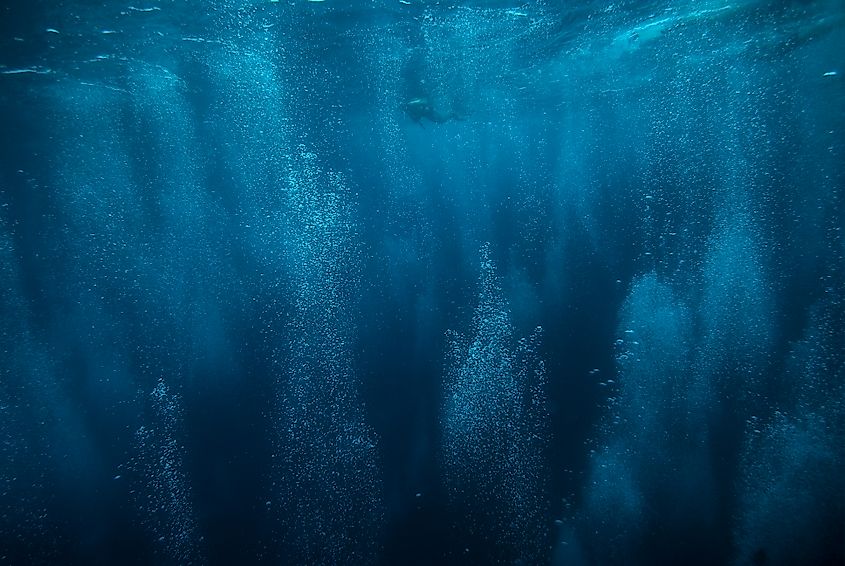
No, not the 1958 cult classic starring Steve McQueen, but an ocean phenomenon nicknamed “the Blob” in the Northeast Pacific Ocean. In late 2013, the ocean temperature heated up in a massive oval for hundreds of miles from near Juneau, Alaska. This marine heatwave was the longest episode of intense ocean heating ever recorded, lasted over 700 hundred days, and resulted in the deaths of an estimated 1.2 million seabirds. Researchers assume the strange phenomenon was caused by “the Blob,” an area of immense heat caused by factors such as high-pressure systems and greenhouse gases. The blob is also to blame for a declining humpback whale population and catches of Pacific Cod, making it a strange and dangerous finding in the Pacific Ocean.
Holes
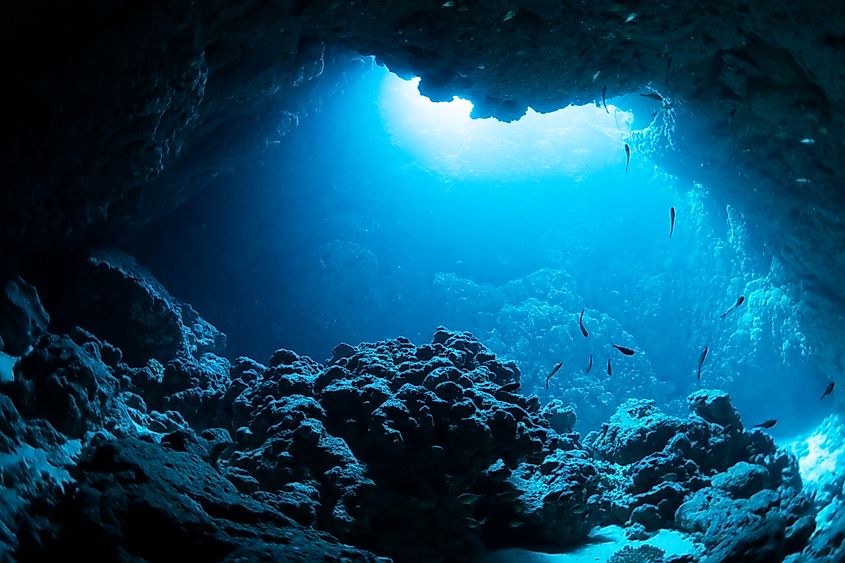
The Sur Pockmark Field, located off the coast of Big Sur, California, is comparable to the size of Los Angeles and contains over 5,200 circular holes. These holes, or pockmarks, average approximately 574 feet (175 meters) across and 16 feet (5 meters) deep. There have been many theories about what causes the holes to form—everything from human trash dropped off the side of a boat to methane gas eruptions. But now researchers from the Monterey Bay Aquarium Research Institute, the United States Geological Survey, and Stanford University may have discovered that sediment gravity flows, like underwater avalanches, are likely responsible for creating and maintaining the holes for hundreds of thousands of years. Nonetheless, a bunch of holes on the ocean floor is still disturbing and might not be an enjoyable sight for someone with trypophobia.
Magnificent Alien
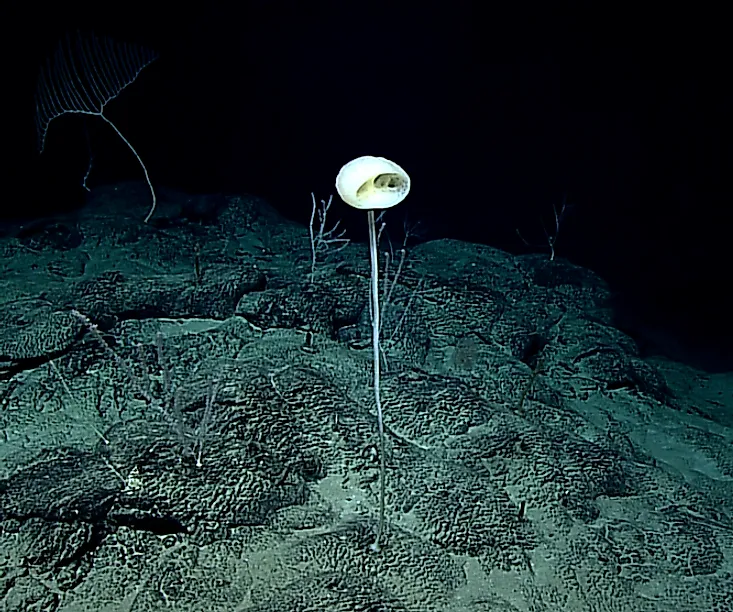
An expedition by the NOAA Office of Ocean Exploration and Research discovered a “forest of the weird,” made up of oddly shaped corals and glass sponges over a mile beneath the Pacific Ocean. On a submerged volcano, the researchers found a glass sponge on a stalk that they thought looked a lot like an alien, so they nicknamed it the “ET sponge” (though its scientific name is “magnificent alien”). This rare find is definitely a strange discovery, and the ET Sponge has only been found in one other place near the Mariana Trench.
Plastic Bag
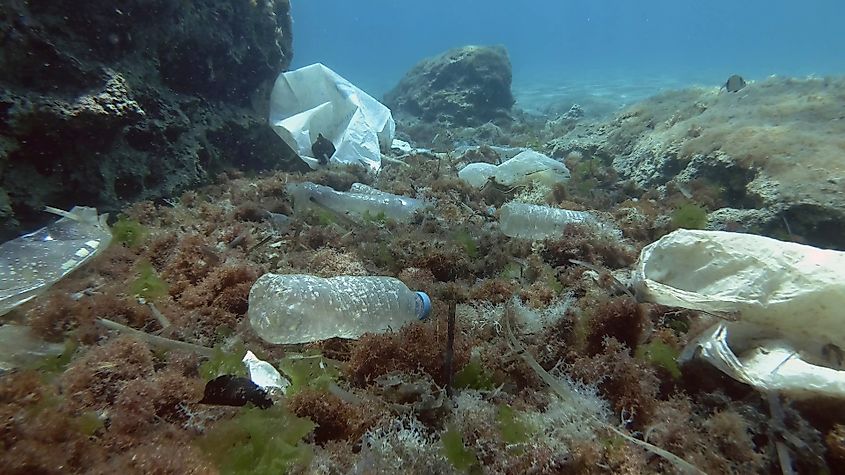
When it comes to the depths of the Pacific Ocean, there is no name more significant than the Mariana Trench. This oceanic trench is the deepest point in the Pacific Ocean, 7 miles (11 km) deep. In 2018, scientists documented the presence of a plastic bag used in grocery stores at the bottom of the Mariana Trench. This discovery was made by scanning through thousands of photos and videos from multiple dives into the depths of this Pacific Ocean trench. While it may not be the strangest thing found at the bottom of the ocean, it may well be the scariest, illustrating just how deep the problem of plastic debris is.
Wrapping Up
The Pacific Ocean is a vast and mysterious body of water, and these strange discoveries only scratch the surface of what lies beneath its waves. From mysterious orbs and ancient cities to underwater crop circles and massive marine heatwaves, there is still much that we do not know about the Pacific Ocean. These discoveries remind humans of the incredible diversity and wonder in the natural world and inspire people to continue exploring and learning about the oceans that cover the Earth.
